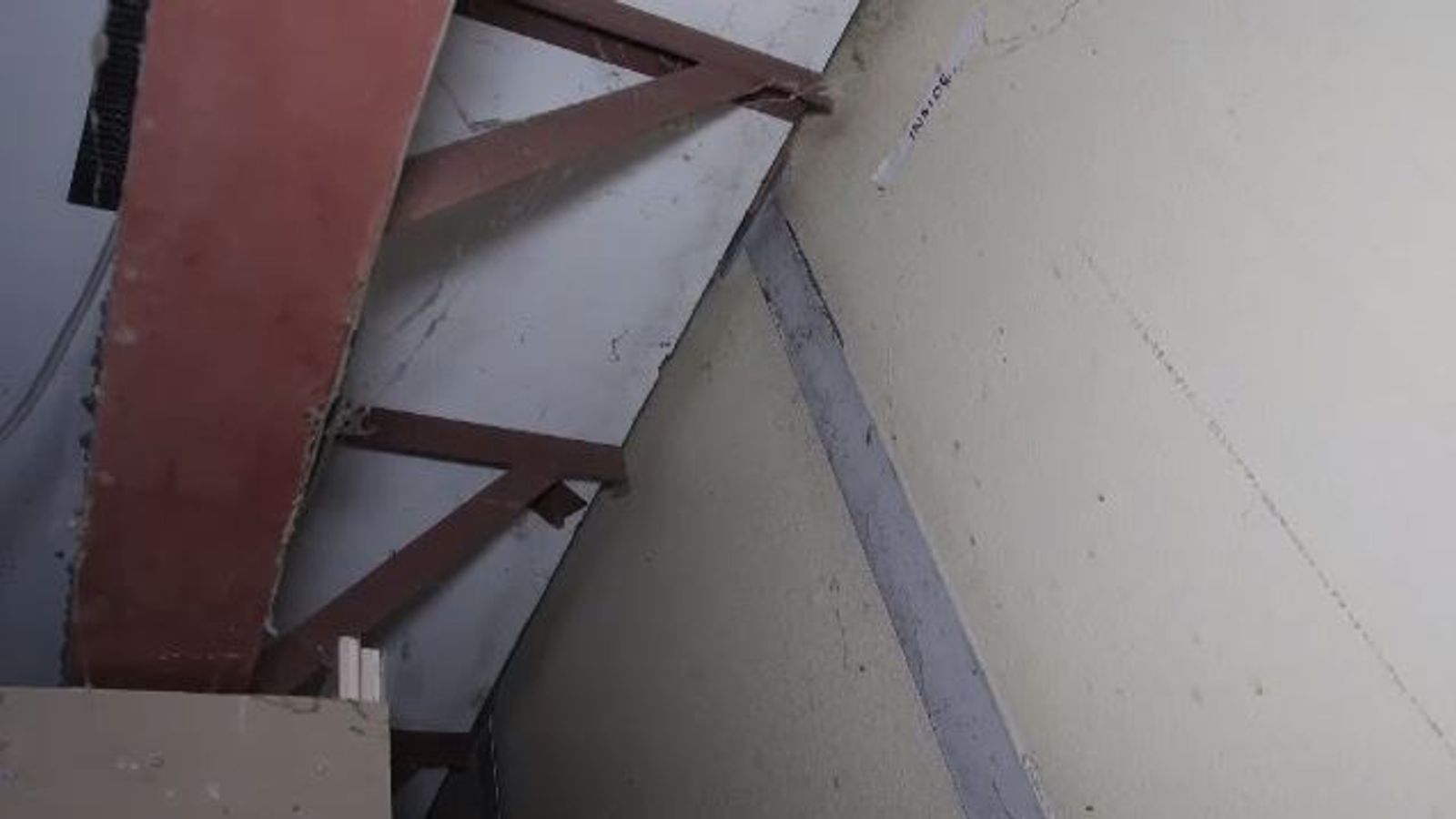James Saunders is wandering through the corridors of Honywood School looking into the condemned classrooms in frustration.
It was in July when the headteacher received the results of a building inspection flagging some issues with the crumbling concrete used to build large parts of this Essex school.
But there was no immediate danger. Issues only needed addressing with a longer-term mitigation plan, they were told by Department for Education officials in August.
The updated risk assessment came on Thursday without warning – ordering the evacuation of any area with the presence of RAAC.
The reinforced autoclaved aerated concrete deteriorates and leaves buildings prone to collapsing. But Mr Saunders is left wondering why, only now, the material is seen as such an immediate danger to safety.
The classrooms we are being shown around on a Saturday afternoon – discussing the hidden danger – will be just as empty next week when the new school year should be starting here.
Read more:
List of all the schools we know are affected by concrete safety fears
Obese patients can’t be moved from hospital ground floor over safety fears
List of all the schools we know are affected by concrete safety fears
RAAC crisis: Obese patients can’t be moved from ground floor at hospital over safety fears
Fears over concrete ‘time bomb’ should not stop search for new building materials | Ed Conway
Instead, 340 of the 800 pupils will have to stay home with 22 classrooms here – half the school – and as many more additional rooms closed off.
“It’s only been on my radar really for the last six months,” Mr Saunders told Sky News. “I’d never heard of RAAC before, until I’d received a document that said we’re doing a survey.”
Even then, the warning signs weren’t there until receiving a phone call on Thursday.
“The risk approach from the DfE had changed,” he said. “And that any room that we had rack in had to be closed with immediate effect, and we weren’t able to use it for the start of term.”
So virtual lessons will return two years after the COVID disruption ended – creating an even bigger crisis for this school near Colchester.
“I think the difference between this and COVID is that every single school was in the same position,” Mr Saunders said. “But now you’ve got some schools that are fine, some schools that aren’t.
“But it is maybe more serious, because there’s a more immediate risk to children that maybe wasn’t there during COVID. And you’ve got an unevenness across the country with schools affected.”
Temporary facilities are being sought and funded to rebuild.
“Who knows what the extent of the problem is and how long it’s going to take to rectify,” Mr Saunders said.
Please use Chrome browser for a more accessible video player
“In a way, the easiest solution will be to put a plaster on it for the next few years. So ultimately, it would be lovely if we could get a new school.”
Parents of pupils at Honywood School are frustrated with the government
Jo Jullien said: “My biggest shock is actually the frustration at how it’s been known prior to the summer holidays – even before that – that there was a problem.
“But my understanding from the email that’s come from the school is actually Honywood was low risk and then suddenly, two days ago, it’s been moved from low risk to actually closing at least half of their classrooms, which is just unbelievable. I can’t imagine how that decision has been made.”
Be the first to get Breaking News
Install the Sky News app for free
Another parent of a GCSE year pupil – Sarah Cooper – also has questions for authorities.
“This is something that they’ve had knowledge of for the entire duration of my first child’s time at the school,” she said.
“So while I have no worries that she was in any kind of danger, or anything like that, it’s frustrating to have this just come out now, the day before, the first of September, essentially, when school kids are just getting ready to go back to school.”






